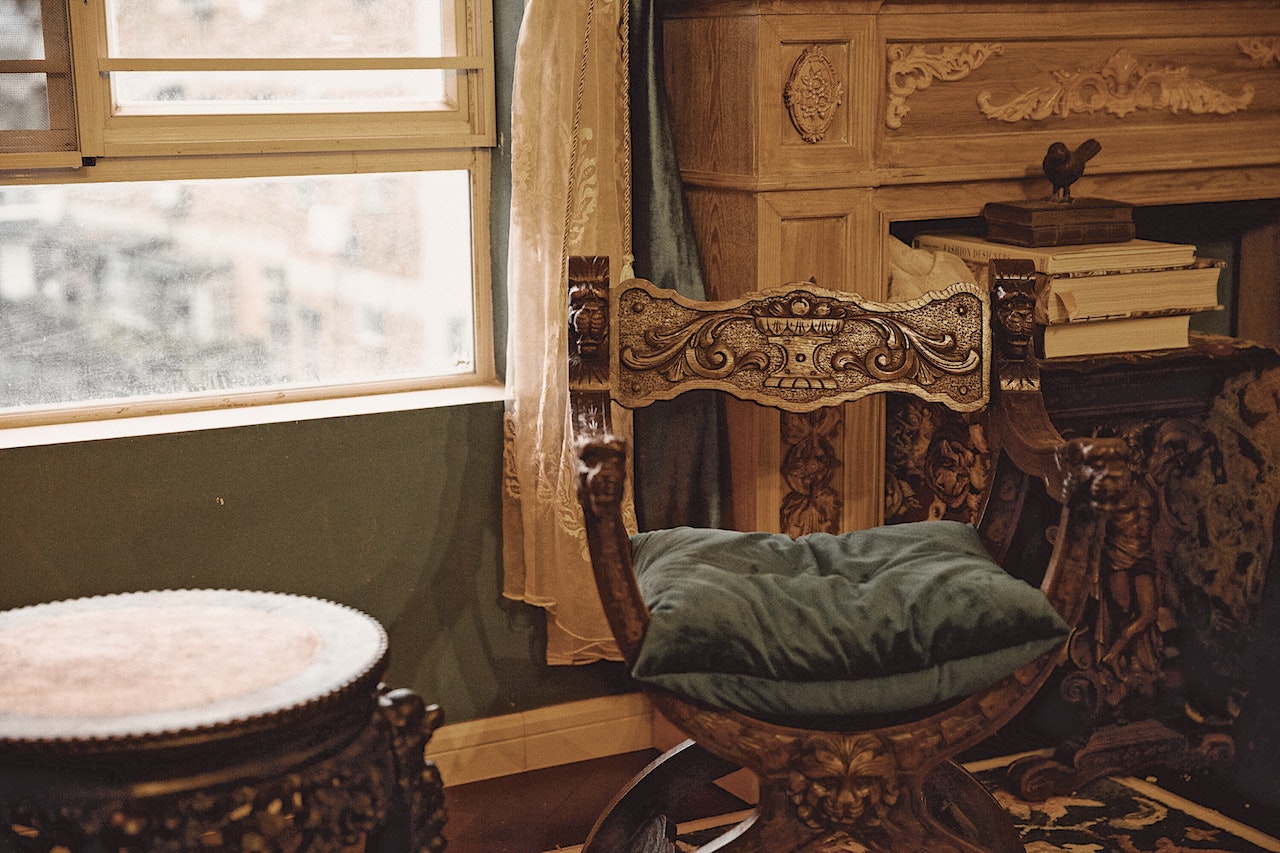The history of furniture, from its origins to present day

It serves us daily, in almost all activities, brings us comfort, and improves our lives. This is furniture, one of the most important elements of the environment in which we live and work.
What transformations has it undergone over time?
The oldest pieces of furniture in the world are located in a Neolithic settlement in today’s Scotland, known as Skara Brae. Here we find, among other things, a series of beds, wardrobes, and shelves for dishes, all made of stone, dating from around 3100-2500 BC. Along with stone, in ancient times people used wood and animal bones, and later metal, as furniture materials. The technique of assembling wood to create more complex pieces of furniture has its origins in ancient Egypt, around 3100 BC. In parallel with timber, the Egyptians used to use ivory to beautify the objects created and later used it to decorate the homes of the rich. While these furnished their house with tables, chairs, beds, and storage boxes, the poor were content with just a few rudimentary objects, using wooden nails as a hanger and a simple brick bench as a bed. In contrast to Egyptian opulence, however, the Greeks did not place so much value on furniture. One of the most precious objects in their homes was the dresser, on which they used to display expensive glasses. Next to it, a frequently used piece of furniture was the sofa, made of wooden frames, ropes, and mats.
In ancient Rome, those with financial means had custom-made carved furniture, which they upholstered, decorated their homes with expensive mosaics, and used oil lamps for lighting. They are also credited with using marble and bronze for the first time in furniture. One of the most important pieces of furniture, common in all the civilizations of the ancient world, was the throne, which the Greeks used to cover with furs. Hammers, screwdrivers, and saws were used as construction tools.
Going back to the Middle Ages, we find heavy furniture, made of solid wood, especially oak, pine, or alder, decorated with stylized plant elements, and later, with Christian symbols. The beds now provided more privacy, surrounded by heavy curtains. A luxury item in those days was the fireplace. Made of iron-clad tree trunks, the chest was in turn one of the most important pieces of furniture. And that’s because it had multiple uses, serving both as storage space and as a table, desk, chair, and even sleeping space. Chairs, on the other hand, were rare, benches and stools being used instead.
The modern age would bring comfort to homes, first by replacing the straw mattresses of the beds with those of bird fluff, and later by designing pieces of furniture in more comfortable shapes. The renaissance would emphasize the aesthetics of furniture, a trend that continued throughout the following centuries, the functionality thus losing ground to appearance. In the 17th century, veneer was used, and the furniture was only covered in solid wood, to hide the cheaper materials and to give a luxurious look. The mother-of-pearl was also used for this purpose. In England, the furniture painted with varnish in bright colours is on-trend. Later, the houses began to be decorated with wallpaper, initially very expensive. Towards the end of the century, libraries were designed, followed by armchairs. It is worth remembering that, still, only the wealthy had access to such products, and the trends in furniture were dictated by noble families.
In the 18th century, there are several more refined furniture manufacturers, promoted through catalogues. These include Thomas Chippendale, George Hepplewhite, and John Goddard. The 19th century comes with a major change in the industry: the mass production of furniture. This step brought both advantages and disadvantages. On the one hand, being manufactured at much lower prices, working-class people also began to have access to it. On the other hand, design has suffered, but this has changed in the 20th century when both quality and design have been improved and costs have become more affordable. In addition, the materials used in the manufacturing of furniture have diversified greatly with the use of glass, plastic, and laminate plywood, among others.
In the contemporary era, when furniture is available everywhere, in shapes, colours, prices, and materials for all budgets and tastes, the need for a new approach was highlighted – sustainability. The use of recycled and environmentally friendly materials has thus begun, and many NGOs have started to draw attention to the exploitation of secular forests by some producers.